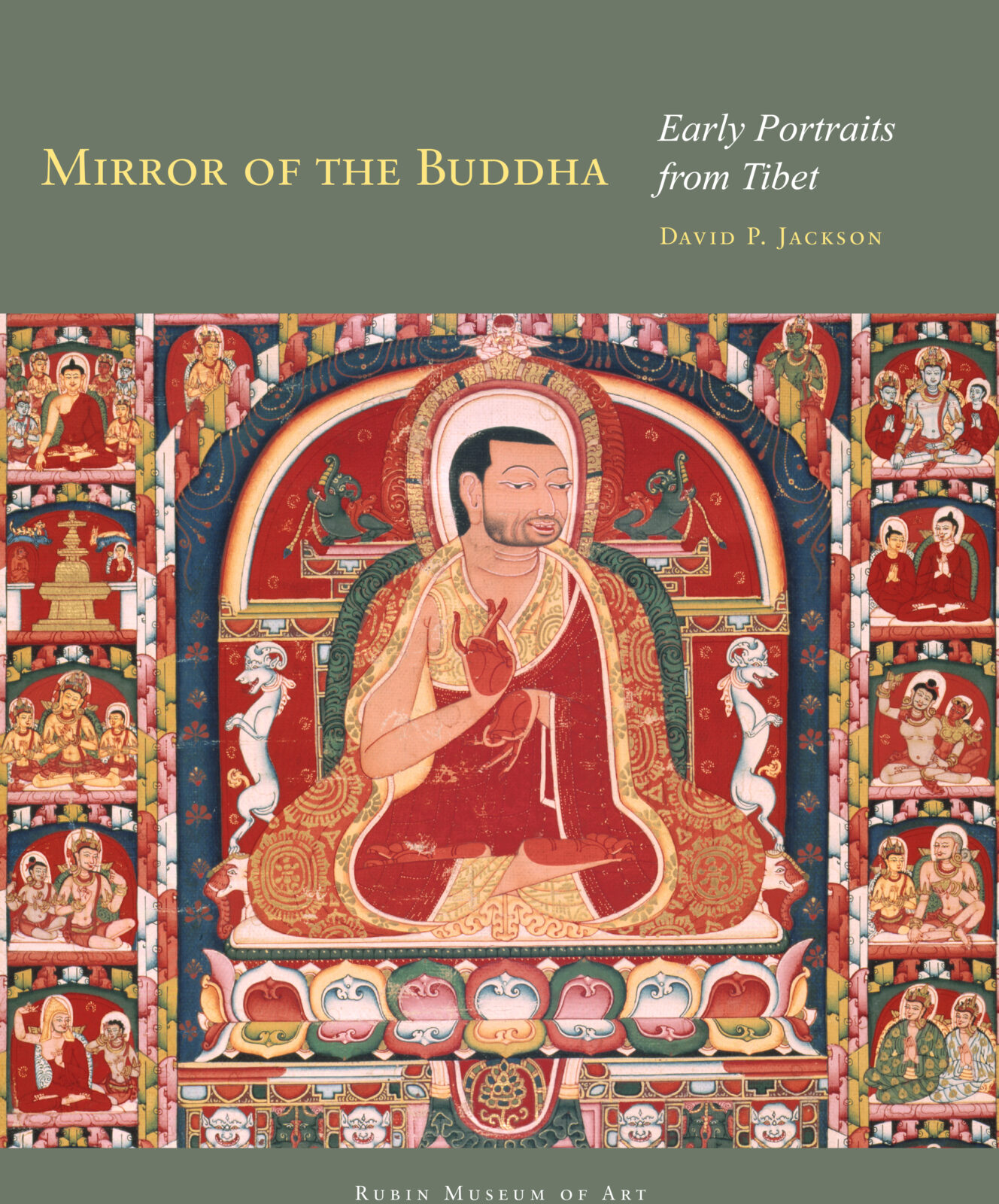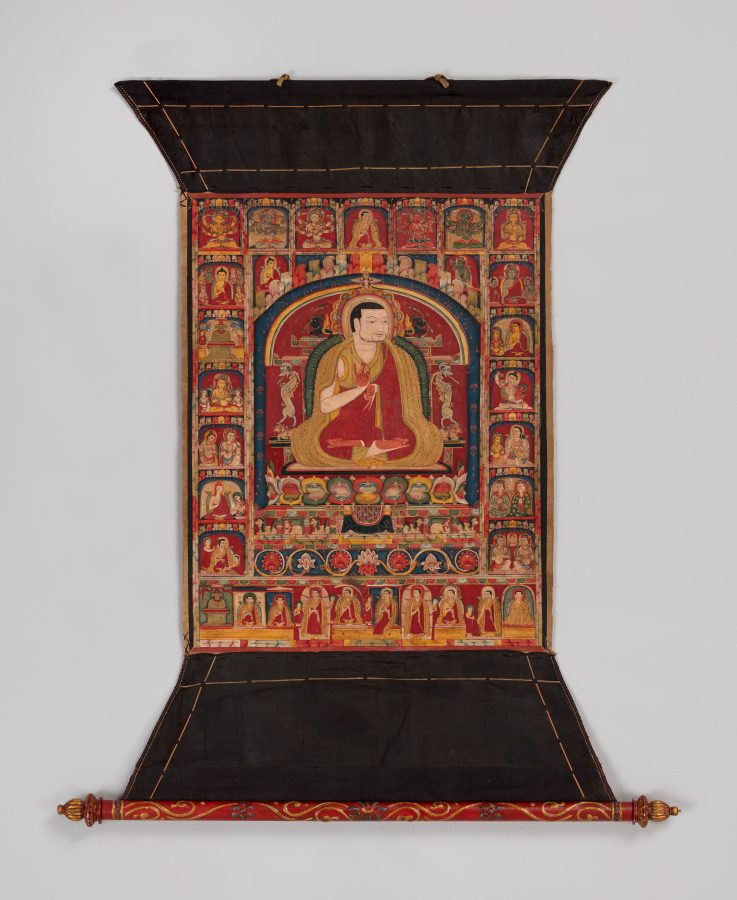In their art, Tibetans aimed at faithfully transmitting and preserving Buddhism as a spiritual discipline as they had learned it from earlier teachers. Each thangka painting was a small contribution to the larger cause of keeping Buddhism alive and radiant. In this third volume on Tibetan painting, David Jackson investigates painted portraits of early Tibetan teachers. Images of these eminent personages embodied Buddhist ideals in human form. In creating these depictions, Tibetan painters of the 12th through the 14th centuries imitated the artistic conventions developed in Pala- and Sensa-ruled eastern India (Bengal). This style, called Sharri, spread from India to many parts of Asia, but its classic Indian forms, delicate colors, and intricate decorative details were emulated most faithfully by the Tibetans.
Jackson, David P., and Christian Luczanits. Mirror of the Buddha: Early Portraits from Tibet. Masters of Tibetan Painting Series. New York: Rubin Museum of Art; Seattle and London: Distributed by the University of Washington Press, 2011.
Find elsewhere:
Library of Congress WorldCat

